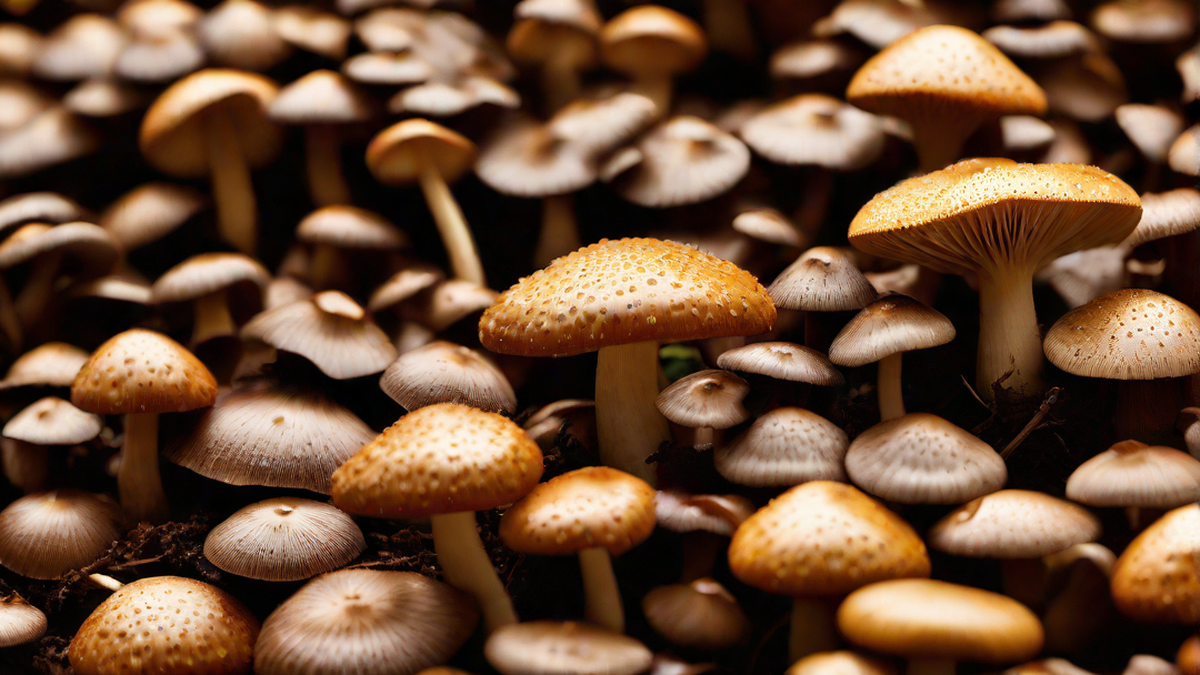Cultivating Stropharia rugosoannulata, or wine cap mushrooms, can be a fulfilling and scrumptious endeavor. Being an enthusiastic mushroom lover, I have joyfully grown these delectable fungi in my own backyard. In this post, I will impart my personal knowledge and provide clear guidelines on how to successfully grow wine cap mushrooms.
Choosing the Right Location
Before diving into the process, it’s essential to select the ideal location for your wine cap mushroom bed. These mushrooms thrive in shaded areas with rich, well-draining soil. Look for a spot that receives filtered sunlight or is under the canopy of trees. It’s crucial to avoid areas that are prone to flooding, as excessive moisture can hinder the growth of your mushrooms.
Preparing the Mushroom Bed
Once you have chosen the perfect location, it’s time to prepare the mushroom bed. Start by removing any existing vegetation or weeds from the area. You can use a garden rake or hand tools to clear the space.
Next, loosen the soil to a depth of about 6-8 inches. This will provide a loose and aerated environment for the mushroom mycelium to establish itself. You can mix in some organic matter, such as compost or well-rotted manure, to improve the soil’s fertility.
After preparing the bed, it’s essential to create a layer of wood chips or straw. Wine cap mushrooms have a symbiotic relationship with wood, so this layer will provide a food source for the mycelium to grow and thrive.
Inoculating the Bed
Now comes the exciting part – inoculating your mushroom bed. Wine cap mushrooms are usually grown from spawn, which is the vegetative mycelium of the fungus. You can purchase wine cap mushroom spawn from reputable suppliers or harvest it from mature wine cap mushrooms.
Spread the mushroom spawn evenly across the prepared bed, making sure to cover the entire surface. You can gently mix the spawn into the wood chips or straw using a garden fork or your hands. Ensure that the spawn is distributed evenly to maximize the chances of successful colonization.
Maintaining the Mushroom Bed
After inoculation, it’s essential to keep the mushroom bed moist to facilitate mycelium growth. Water the bed regularly, especially during dry spells, to maintain a consistent moisture level. Avoid overwatering, as excessive moisture can lead to mushroom diseases or fungal competitors taking over.
As the mycelium establishes itself, it will begin to form thick, white strands known as rhizomorphs. These are a positive sign that your wine cap mushrooms are thriving and growing. Be patient, as it may take several months for the mycelium to fully colonize the bed.
Harvesting and Enjoying the Fruits
Once the mycelium has fully colonized the bed, it’s time to enjoy the fruits of your labor. Wine cap mushrooms typically appear after a heavy rainfall or during periods of high humidity. They have distinctive reddish-brown caps and a pleasant, earthy flavor.
When harvesting, gently twist or cut the mushrooms at the base to avoid damaging the mycelium below. Harvest only the mature mushrooms, leaving the smaller ones to continue growing and spreading their spores. Wine cap mushrooms have a relatively short shelf life, so it’s best to consume them as soon as possible.
Conclusion
Growing wine cap mushrooms is a fascinating and rewarding endeavor that allows you to connect with nature and enjoy the fruits of your own labor. With the right location, proper bed preparation, and regular maintenance, you can cultivate a thriving mushroom bed that will provide you with a bountiful harvest. So, why not give it a try and embark on your own mushroom-growing adventure?
